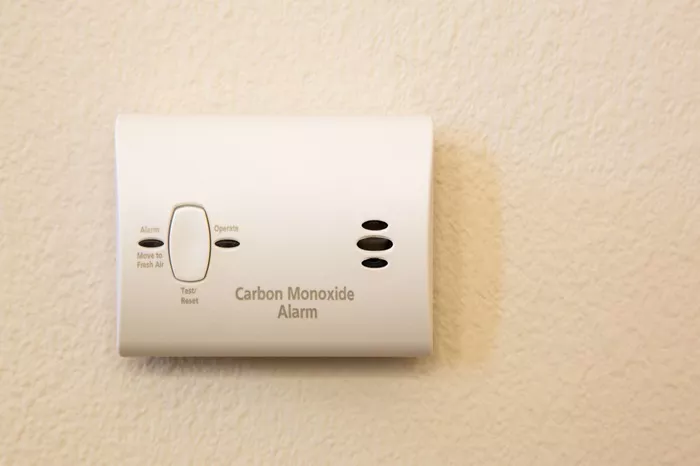Carbon monoxide (CO) detectors have become an essential safety device in homes and businesses, helping to protect occupants from the dangers of carbon monoxide poisoning. However, many people mistakenly believe that these detectors can also identify other types of gas leaks, such as natural gas or propane. This article explores whether a carbon monoxide detector can detect a gas leak, the differences between CO and other gases, and the appropriate safety measures for gas leak detection.
Understanding Carbon Monoxide and Gas Leaks
The Nature of Carbon Monoxide
Carbon monoxide (CO) is a colorless, odorless, and tasteless gas that is produced by the incomplete combustion of fossil fuels such as coal, wood, charcoal, oil, kerosene, propane, and natural gas. Common sources of CO in the home include gas appliances, furnaces, fireplaces, and motor vehicles.
The Danger of Carbon Monoxide
Carbon monoxide poisoning occurs when CO builds up in the bloodstream, preventing the blood from carrying oxygen to cells, tissues, and organs. Symptoms of CO poisoning include headache, dizziness, weakness, nausea, vomiting, chest pain, and confusion. High levels of CO can cause loss of consciousness and death.
The Nature of Natural Gas and Propane
Natural gas and propane are commonly used as fuel for heating, cooking, and other applications. Natural gas primarily consists of methane, while propane is a byproduct of natural gas processing and petroleum refining. Both gases are colorless and odorless in their natural state, but an odorant, usually mercaptan, is added to make them detectable by smell.
The Danger of Gas Leaks
Gas leaks can lead to explosions, fires, and asphyxiation. A leak can occur due to faulty appliances, damaged pipes, or human error. The added odorant helps people detect a gas leak by smell, typically described as a rotten egg or sulfur-like odor. However, relying solely on smell is not always reliable, especially if the leak occurs in an area where the odorant is not noticeable.
Carbon Monoxide Detectors and Their Function
How Carbon Monoxide Detectors Work
CO detectors are designed to sense the presence of carbon monoxide in the air and sound an alarm when CO levels become dangerous. These detectors use various sensing technologies, including electrochemical, biomimetic, and metal oxide semiconductor sensors.
1.Electrochemical sensors generate a small electrical current when CO is present, triggering the alarm.
2.Biomimetic sensors use a gel that changes color when it absorbs CO, which then triggers the alarm.
3.Metal oxide semiconductor sensors have a silica chip that lowers its electrical resistance in the presence of CO, triggering the alarm.
Limitations of Carbon Monoxide Detectors
While CO detectors are highly effective at detecting carbon monoxide, they are not designed to detect other gases such as natural gas or propane. The sensors in CO detectors are calibrated to respond specifically to CO molecules and are not sensitive to methane, propane, or other combustible gases.
See also: Can You Get Carbon Monoxide Poisoning From Fuel Oil?
Detecting Natural Gas and Propane Leaks
The Need for Gas Detectors
To detect natural gas or propane leaks, gas detectors specifically designed for these gases are required. These detectors can identify the presence of methane, propane, and other combustible gases in the air and alert occupants to potential leaks.
Types of Gas Detectors
Gas detectors come in various forms, including:
Fixed gas detectors: Installed in homes or businesses, typically near potential sources of gas leaks.
Portable gas detectors: Handheld devices used by professionals to check for gas leaks in various locations.
Combination gas detectors: Devices that can detect multiple types of gases, including CO, methane, and propane.
How Gas Detectors Work
Gas detectors use different sensing technologies to detect combustible gases:
Catalytic bead sensors: Detect gases through a chemical reaction that produces heat, changing the resistance of a wire and triggering the alarm.
Infrared sensors: Measure the absorption of infrared light by gas molecules, identifying the presence of specific gases.
Semiconductor sensors: Detect gases by changes in electrical resistance of a metal oxide semiconductor when exposed to gas.
Safety Measures for Gas Leak Detection
Installation and Maintenance of Detectors
Proper installation and maintenance of both CO and gas detectors are crucial for effective protection:
Placement: Install CO detectors near sleeping areas and on each level of the home. Gas detectors should be placed near potential sources of leaks, such as gas appliances and in utility rooms.
Maintenance: Regularly test detectors according to the manufacturer’s instructions, replace batteries as needed, and replace the entire unit according to the manufacturer’s lifespan recommendations.
Responding to Alarms
Knowing how to respond to a detector alarm is essential for safety:
CO Detector Alarm: Immediately move to fresh air, call emergency services, and do not re-enter the building until it is declared safe.
Gas Detector Alarm: Evacuate the area, avoid using electrical switches or devices, call emergency services or the gas company from a safe location, and do not re-enter until it is safe.
Additional Safety Tips
Regular Inspections: Have gas appliances and heating systems inspected and maintained by qualified professionals regularly.
Ventilation: Ensure proper ventilation in areas where gas appliances are used.
Awareness: Educate all household members about the signs of CO poisoning and gas leaks and the proper response to alarms.
Conclusion
While carbon monoxide detectors play a vital role in protecting against CO poisoning, they do not detect natural gas or propane leaks. Homeowners and businesses should also install gas detectors to ensure comprehensive protection against all types of gas-related hazards. Regular maintenance, proper installation, and immediate response to alarms are key to ensuring safety from the dangers of both carbon monoxide and combustible gas leaks.
Related topics:
Can You Mix Heating Oil And Diesel Fuel?

